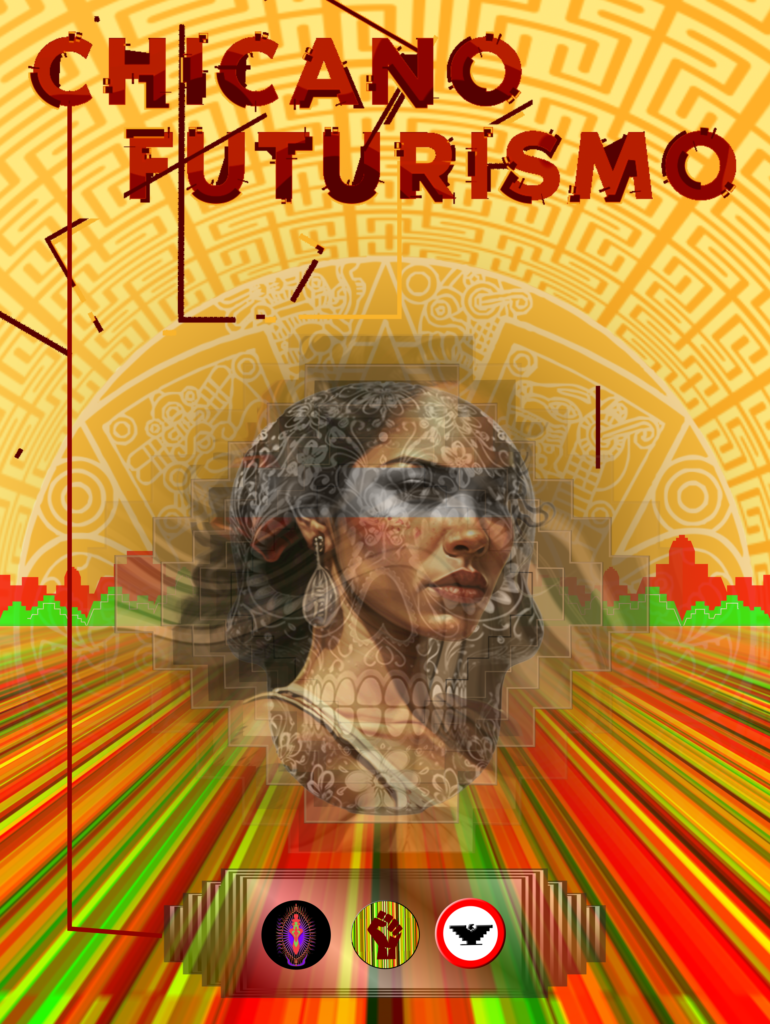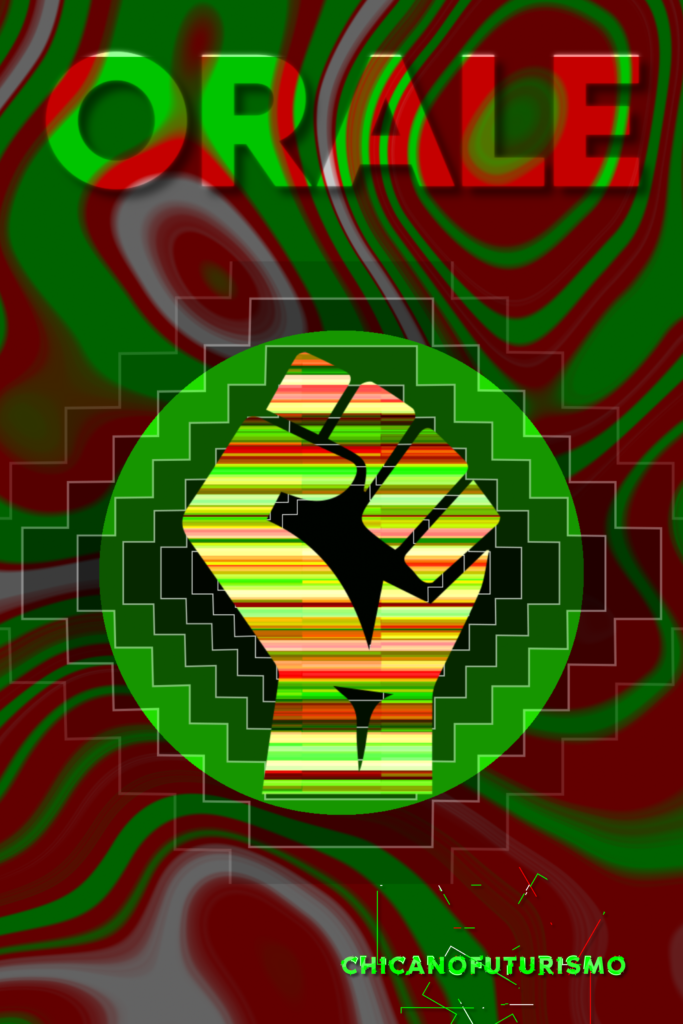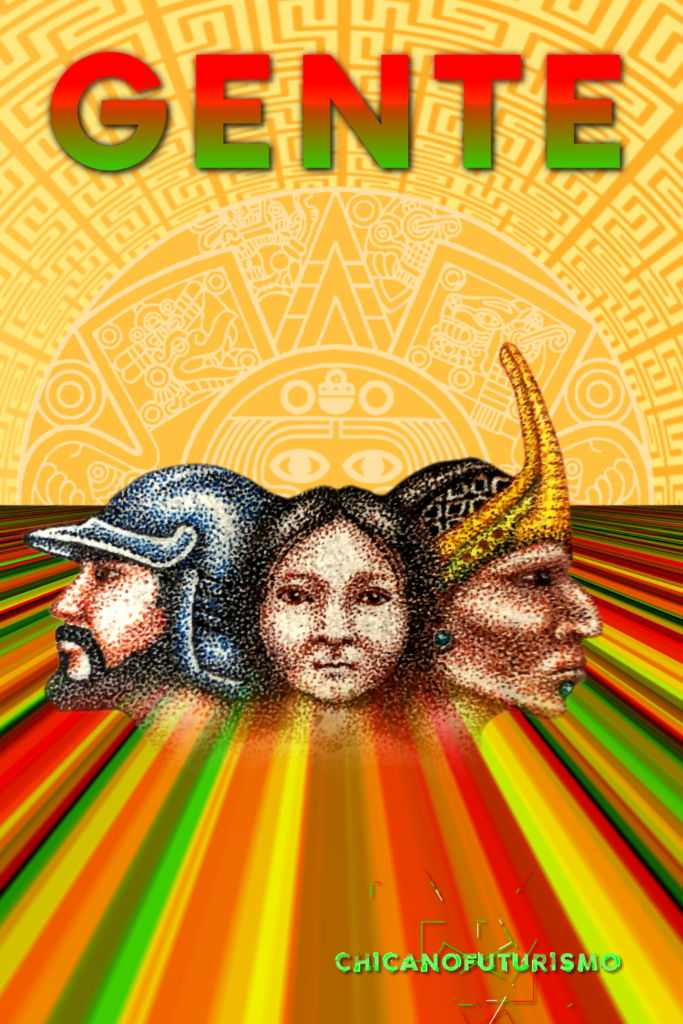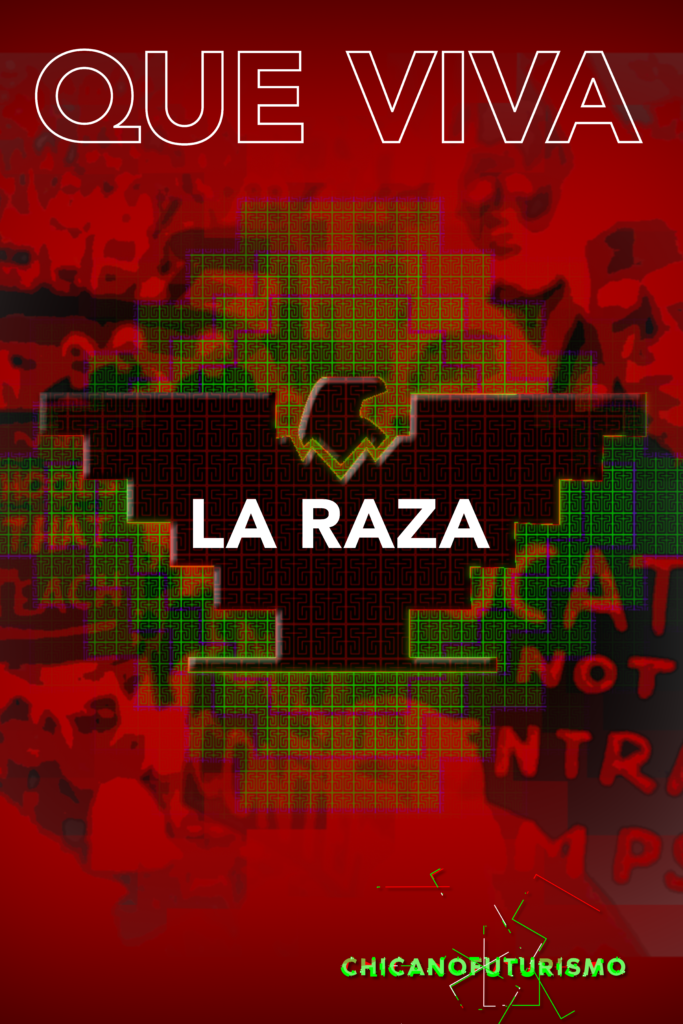Chicanofuturismo is a montage of scanned ink on paper illustrations, digital illustrations, photgraphy, video footage, kinetic typography, and AI-generated imagery in a glitchy and hallucinogenic motion graphics audiovisual experience.
Chicanofuturismo centers on the concept of Aztlán–“tierra de la garza blanca” or “land of the white heron”–the mythical northern homeland of the Aztecs. Aztlán became the name of the Chicano homeland during the Chicano Movement of the 20th century. In Chicanofuturismo, Aztlán extends into a virtual and conceptual utopian space that nurtures our cultural identity through the dissemination of cultural symbols. Artists, Literary Heroes, and Chicano civil rights leaders are conjured from the past and broadcasted into the Aztlán field via digitized visual information. These information patterns of visual tradition are conveyed through Mesoamerican motifs of mixed Aztec, Maya, and Hopi/Pueblo patterns, and displayed on retro-futurist video screens.
The memories of the Movimiento’s cultural/spiritual/political ideals are transmitted into Aztlán space, and translated into kinetic typographical agit-prop slogans. Cultural and spiritual iconography are revealed through the intersecting patterns of digital-cultural recuerdos from the center of the Aztlán matrix called Sipapu, a portal from which the ancestors emerge into the present world.
Chicanofuturismo’s primary objective is to promote Carnalismo – A brotherhood founded on indigenous values of helping and supporting each other. Libertad and unidad are achieved in the present and future under a unified Chicano identity.
The soundtrack is composed of familiar signifiers from brown-eyed soul, cumbia, Chicano rock, funk, and salsa. These styles are merged into decidedly psychedelic textures to accentuate the visually kinetic elements of Chicanofuturismo.




Jeremy Marquez-Simanca is a Denver-native Chicano artist and graphic designer now based in NYC. He was the co-founder and curator of award-winning Revoluciones Collective Art Space in Denver from 1997-2005, that held a crucial role in the launch of both the Santa Fe and RINO art districts.
